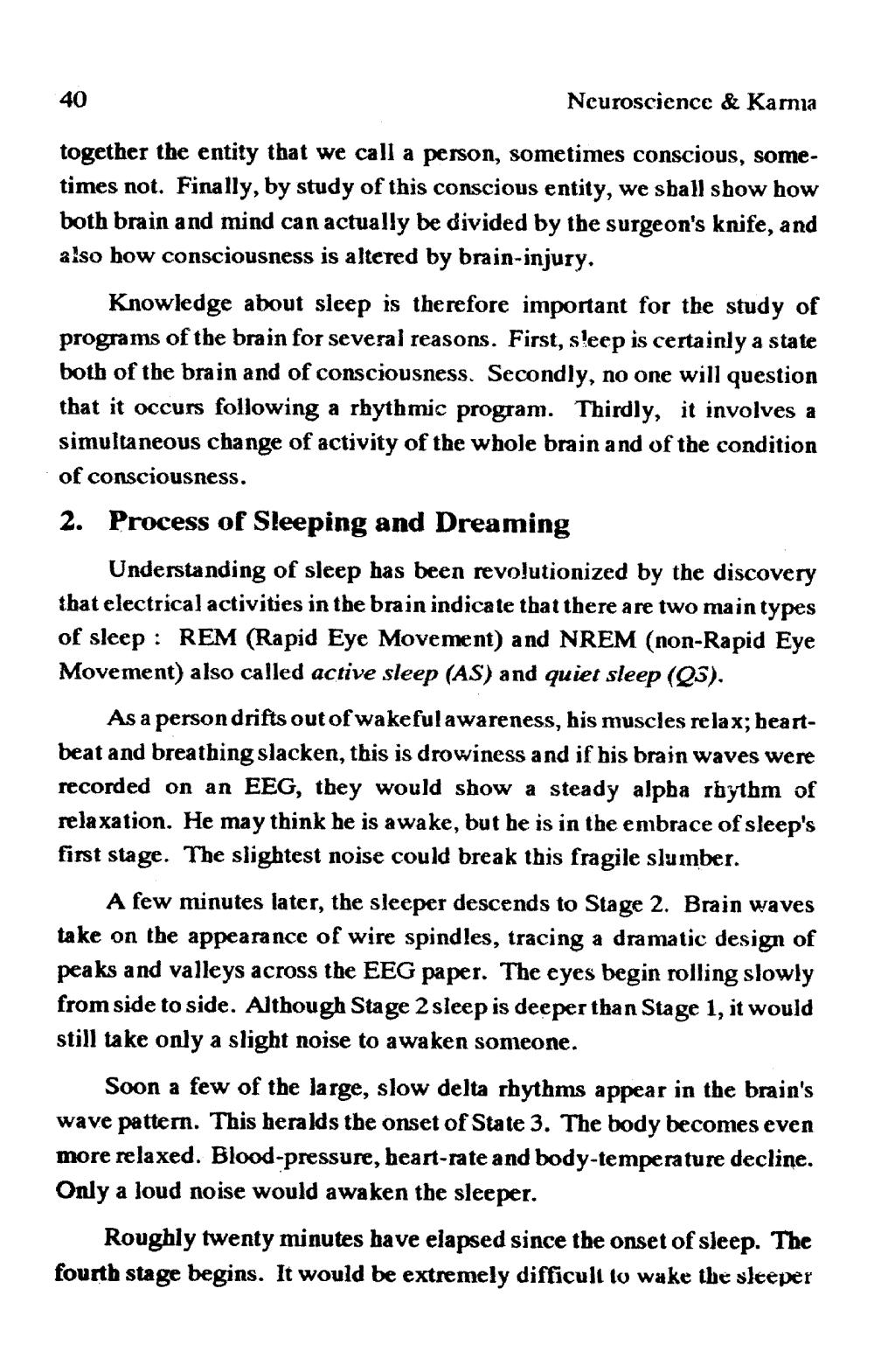________________
Neuroscience & Karma
together the entity that we call a person, sometimes conscious, sometimes not. Finally, by study of this conscious entity, we shall show how both brain and mind can actually be divided by the surgeon's knife, and also how consciousness is altered by brain-injury.
40
Knowledge about sleep is therefore important for the study of programs of the brain for several reasons. First, sleep is certainly a state both of the brain and of consciousness. Secondly, no one will question that it occurs following a rhythmic program. Thirdly, it involves a simultaneous change of activity of the whole brain and of the condition of consciousness.
2. Process of Sleeping and Dreaming
Understanding of sleep has been revolutionized by the discovery that electrical activities in the brain indicate that there are two main types of sleep: REM (Rapid Eye Movement) and NREM (non-Rapid Eye Movement) also called active sleep (AS) and quiet sleep (Q5).
As a person drifts out of wakeful awareness, his muscles relax; heartbeat and breathing slacken, this is drowiness and if his brain waves were recorded on an EEG, they would show a steady alpha rhythm of relaxation. He may think he is awake, but he is in the embrace of sleep's first stage. The slightest noise could break this fragile slumber.
A few minutes later, the sleeper descends to Stage 2. Brain waves take on the appearance of wire spindles, tracing a dramatic design of peaks and valleys across the EEG paper. The eyes begin rolling slowly from side to side. Although Stage 2 sleep is deeper than Stage 1, it would still take only a slight noise to awaken someone.
Soon a few of the large, slow delta rhythms appear in the brain's wave pattern. This heralds the onset of State 3. The body becomes even more relaxed. Blood-pressure, heart-rate and body-temperature decline. Only a loud noise would awaken the sleeper.
Roughly twenty minutes have elapsed since the onset of sleep. The fourth stage begins. It would be extremely difficult to wake the sleeper




